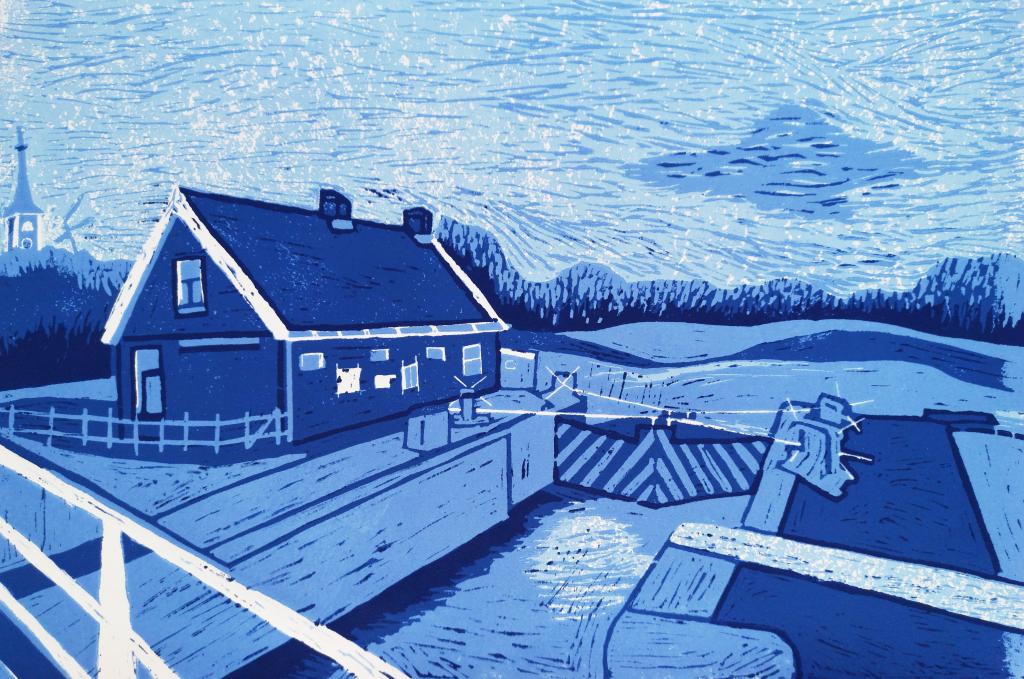Isa Balder
The Water Board is responsible for water management in the historic Noorderkwartier of the province of North Holland. One of these historic structures is the Grote Sluys in the town of Oudesluis. The Grote Sluys with the lock keeper's house was built to the design of the lock builder Willem Jansz Benningh. The lock dates back to 1562 and was then built of wood. In 1631, the lock was replaced by a larger one made of stone and was then one of the largest locks in Europe. A sign on the facade indicates how much it cost to pass through the hydraulic complex (Here in white on the side of the lockkeeper's house). The color of the linocut is derived from the blue flag of Hoogheemraadschap Hollands Noorderkwartier.
This linocut is an ode to the historical past of Dutch hydraulic engineering. While building other hydraulic works, Willem Jansz Benningh had to contend with floods and high tides. The city government encouraged him by promising concession if the labor succeeded. The extra work had cost him 20,000 guilders. However, only 11,000 of their work was made good. To avoid ruin, he sought the intervention of the States General and Prince Maurice. They granted the requested payments.
